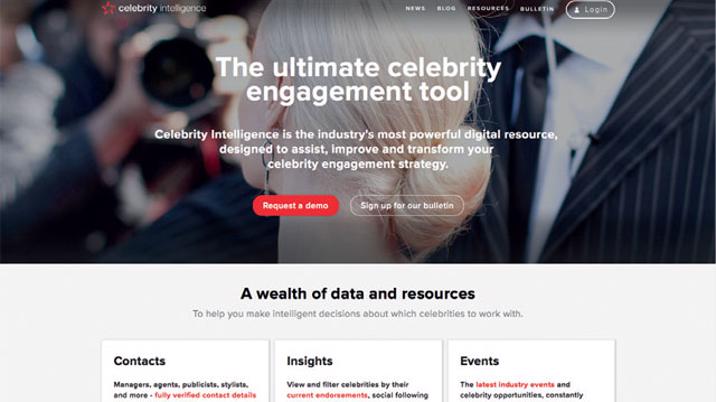
Business publications have always sold themselves on the fact that their content could generate significant value for their readers’ businesses: securing a new client, forging a strategic partnership, identifying a new supplier, saving significant costs. But the link between articles and business value can be hard to prove. And many B2B media are only charging £100-200pa for a subscription, so have to appeal to a wide audience and rely on advertiser support to cover their editorial investment.
Now however, a new generation of high value, digitally delivered, subscription services are directly providing business users with specific data and intelligence precisely designed to solve their most pressing needs. And they are transforming the revenue models of those B2B media businesses with the vision to develop them. Many can charge £3-5k pa for a subscription, or over £10k pa on an enterprise deal with multiple users.
* HSJ Intelligence provides vendors with insight into buyers in the NHS.
* Celebrity Intelligence has turned a digital directory into a practical online tool for media, brands and charities to research celebrity endorsements, with subscriptions costing thousands of pounds per year – and has launched into the US.
* QUBE provides online intelligence on auto technologies and future model data for professionals in auto supplier companies – with over 100k content items.
* WGSN Instock collates real time data on online shopping trends and allows fashion merchandisers to analyse trends and make better informed decisions on what to stock.
These data and intelligence products can transform the business model of B2B media, adding high value, subscription revenues with exceptionally good renewal rates, often over 90%. As well as smoothing out the volatility of advertising and live event revenues, developing a data product subtly repositions a former B2B publisher as a “digital information provider”, increasing the perceived quality of earnings and the multiples that investors will pay for the business. Plus, a digital data-driven product is much easier to internationalise, and establish a global brand.
But how can the average publisher identify such an opportunity and develop and launch such a product? Over the last two years, I have been talking to twenty or so B2B media organisations, which have successfully launched data and intelligence products and identified what they have done to get there.
1 Spotting the opportunity
The starting point is a good look at your underlying market. Where are the big transactions? Who is making the significant business decisions? Then start to talk to the people who might become your subscribers. Do this in person, not over an online survey, as you need to dig into the detail of the main pain points and the information gaps. It might take some time to find out what information they are missing. Then match this against your ability to aggregate and add value to the data. Editorial insight can add that extra sparkle to data which could be available elsewhere. You may find that the audience for your subscription product are different to your current readers – they may have a different job role in the same organisation. Or they could be your advertisers: Health Service Journal is read by NHS managers, but HSJ Intelligence is sold to vendors.
2 Designing the product
Developing the product has to be done in collaboration with your target audience. Many successful media businesses have set up a long-term user group and checked the product with them regularly from a very early stage. Digital data products are as much about the ease of use and the interface as they are about the underlying content.
Proprietary data is highly valuable, but curating publicly available data and making it easy to connect to your editorial insights and analysis is also important. Many media businesses have used outsourced data agencies to collate third party data to incorporate into their products.
Ask your audience how they want to search. WGSN Instock created a bespoke taxonomy for women’s fashion that reflected how merchandisers thought. HSJ Intelligence developed a mapping tool so that users could define their key geographic territories. Subscribers will want to customise charts and outputs to meet their needs, and export data to Excel or Salesforce to use it directly. Creating useful tools, such as Celebrity Intelligence’s event planner, help the product to become part of the subscriber’s workflow.
3 Managing development and content
Digital product development is an alien process to many B2B publishers. What works well is involving users and stakeholders in the development process, and adding features gradually, then taking on board user feedback before iterating.
Think about how the product will be populated with content. Will your editorial team create specific content or will magazine content be repackaged and searchable? How will news or data updates be fed into the product? If you are planning to offer email alerts or newsletters, who will edit them, or can they be automated based on user preferences? How will visuals and infographics be created? And how will data feeds be updated?
If you intend to produce trend analysis, special reports or forecasts, which is a great way to add value, then that might mean hiring in specialist analysts: this is a different set of skills to traditional journalism. Some products include benchmarking or survey data, which has to be collected from subscribers or other organisations in your market: think about how this can be automated and what incentives might need to be provided.
4 Setting up marketing and sales
In many markets, it makes sense to have a tiered pricing structure with a basic package, and then more premium options with extra logins, additional data, special reports and maybe also on-call analysts for bespoke advice. At launch, this can help clients start with a lower commitment and then upgrade later when value is proven. With larger customer organisations, it pays to offer enterprise licences with multiple logins, possibly with different tiers of access. When it comes to renewals, the more in-house advocates for the value of the service the better.
Selling higher priced (£5-10k) subscriptions requires a different approach to sales, involving senior managers and analysts in running face to face demos and showing how the product will solve client problems. The sales team themselves need a distinct set of skills; more consultative and providing ongoing account management. Most B2B media organisations who have launched data products have recruited a separate sales team.
If your audience is very tightly defined, then it should be a simple task to identify prospects. But for more peripheral audiences, content marketing is an efficient way to generate leads; by demonstrating the quality of the analysis available from the premium service. This could include blogs, webinars or white papers.
5 Analysis and renewal
Data products require far greater support during the set-up phase, and many companies provide dedicated teams to train super-users in client teams and offer on-call support during the first few months. If a product isn’t used, then it will be much harder to renew.
Part of the appeal of digital data products is the detailed analytics available. These can be used to identify what content is being consumed, allowing editorial and data teams to prioritise content updates. Analytics can also identify super users within client organisations who could become internal advocates, and light users who maybe need refresher training.
Alongside analytics, it certainly pays to run an ongoing user group or advisory board to get high level feedback and suggestions for future development or additional data-sets.
6 Adding extra services
How can you grow revenues from a data product? A good first step is creating a suite of specialist reports, based on the data in the core product, which can then be sold as standalone reports, or as part of a premium subscription package.
Many B2B media companies offer some form of consultancy to subscribers as a premium service. This could be creating bespoke analysis using the data in the product, or running strategic planning workshops on key issues.
Where subscribers have an interest in sharing best practice or networking, there is often value in creating more of a membership proposition, including exclusive analyst events with networking opportunities, or targeted webinars.
7 Developing strategically
Data and intelligence products require high investment to research, develop, sell and market, so many companies are exploring new audiences in related markets, who can be served by a re-skinned version of the same product, possibly populated with a different data-set.
Celebrity Intelligence was at first targeted at media outlets, but has developed re-designed versions with the same functionality and data, aimed at brand owners and charities respectively. They have also set up a US product, with the same functionality but different data.
QUBE, the automotive data product from AROQ, has auto industry suppliers as its core audience, but is now investigating the potential within the banking and finance sector. It has also been topping up data in less well-served geographies.
A crucial factor in identifying opportunities for new functionality, data sets and sister subscription products, is a close co-operation with existing subscribers, as part of an “advisory board” or “customer council” that is structured to elicit more detailed feedback.
The economic and strategic case for B2B media businesses to develop premium subscription, data and intelligence products is very strong.
What appears to drive success is having great clarity on who the target audience are, and what their information needs are, which can only be divined from in-depth research. The content and data specification and technical product development need to be meticulously managed, with a gradual evolution of features, and continuous input from a user group.
Marketing and sales need to be planned more along the lines of a software product than a media brand, and both analytics and first-hand user feedback mined for product enhancements.
So quite a challenge for B2B media, but judging by the results that many organisations have achieved, well worth the investment of time and resource.










